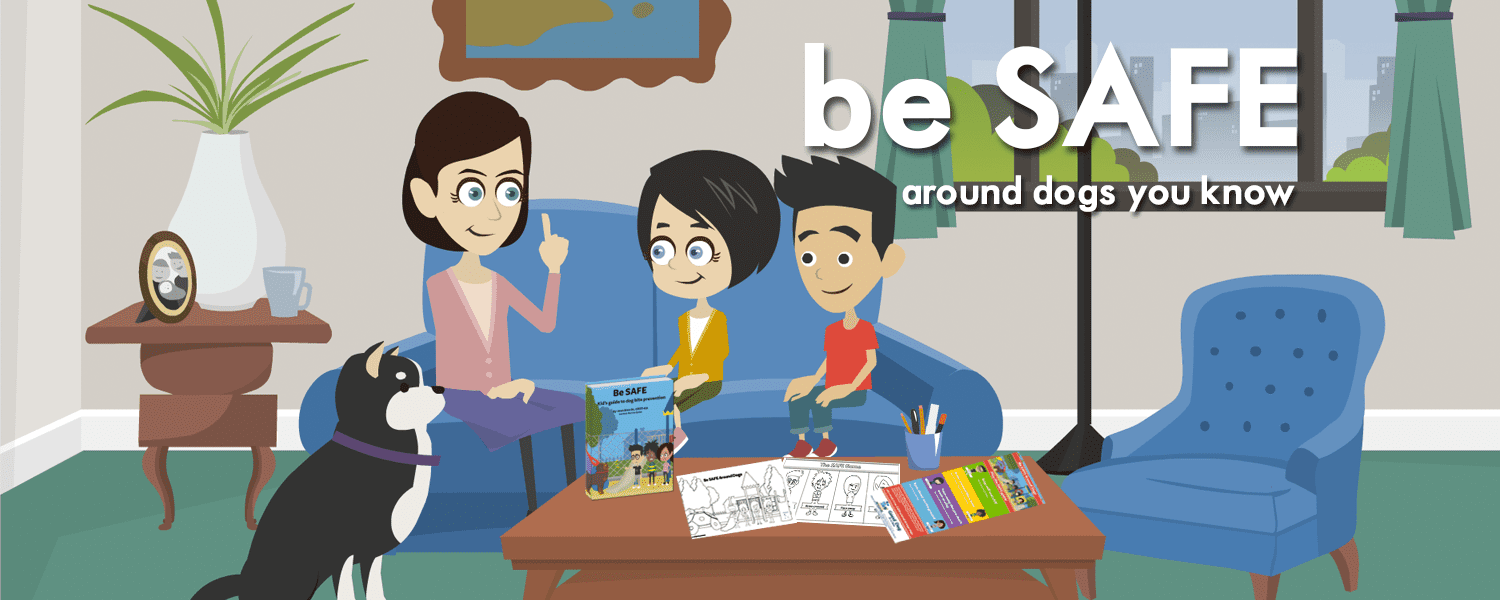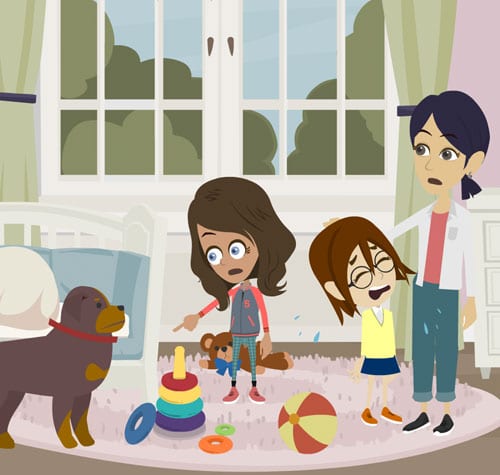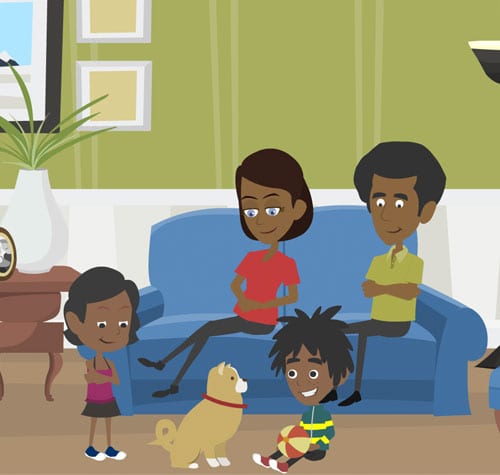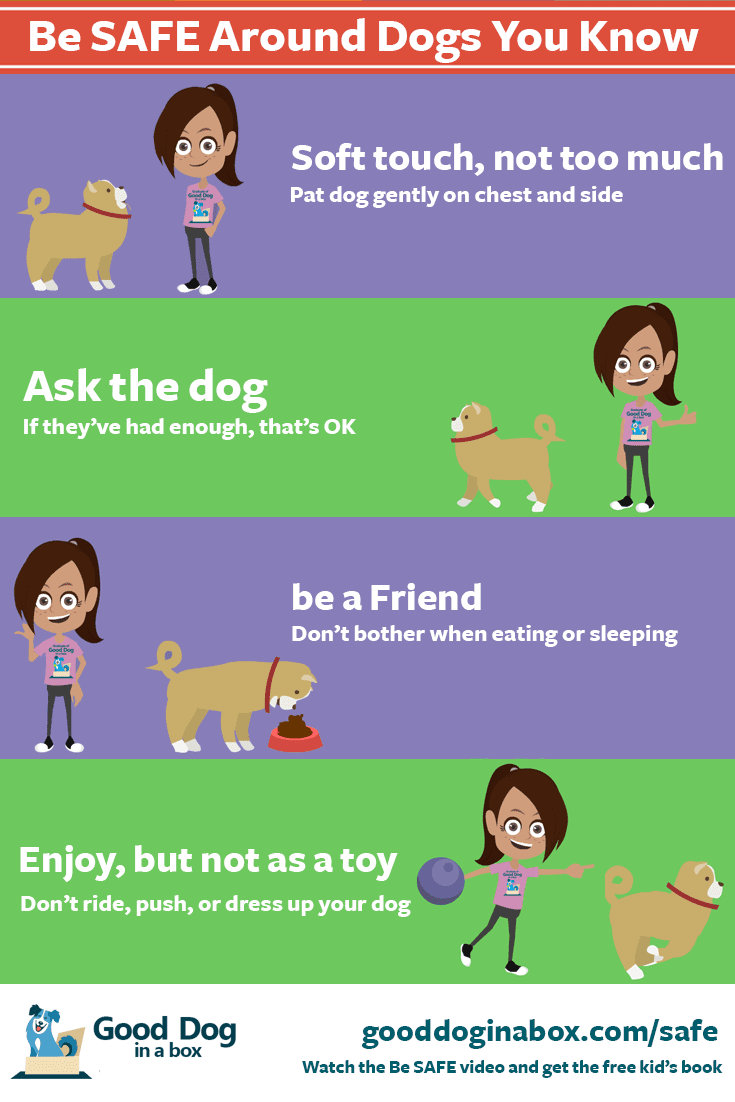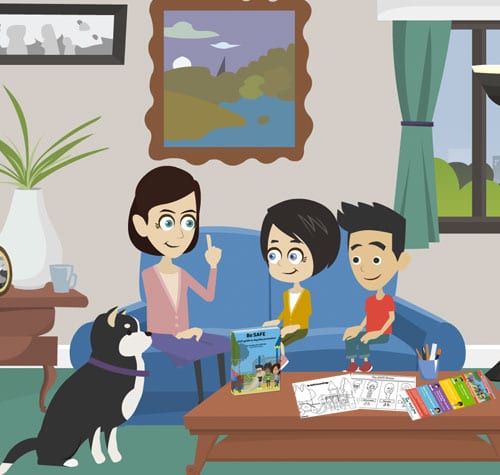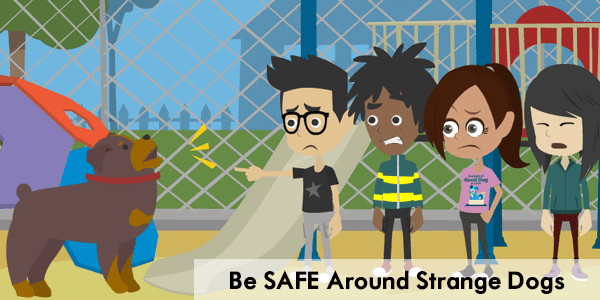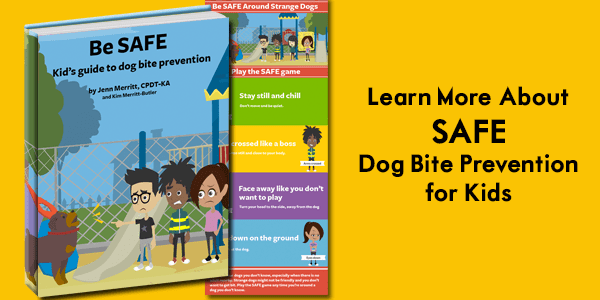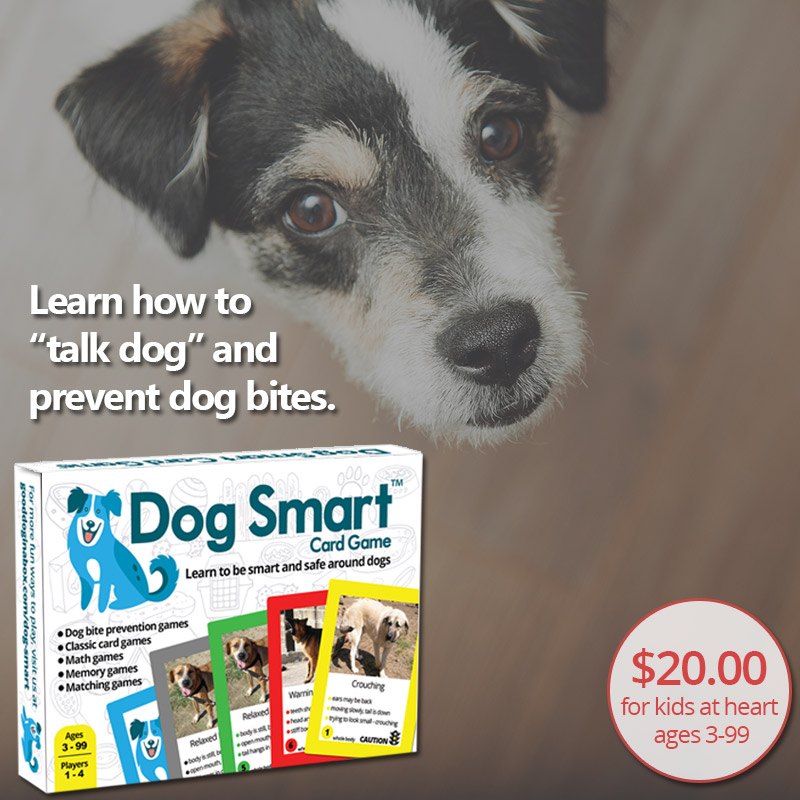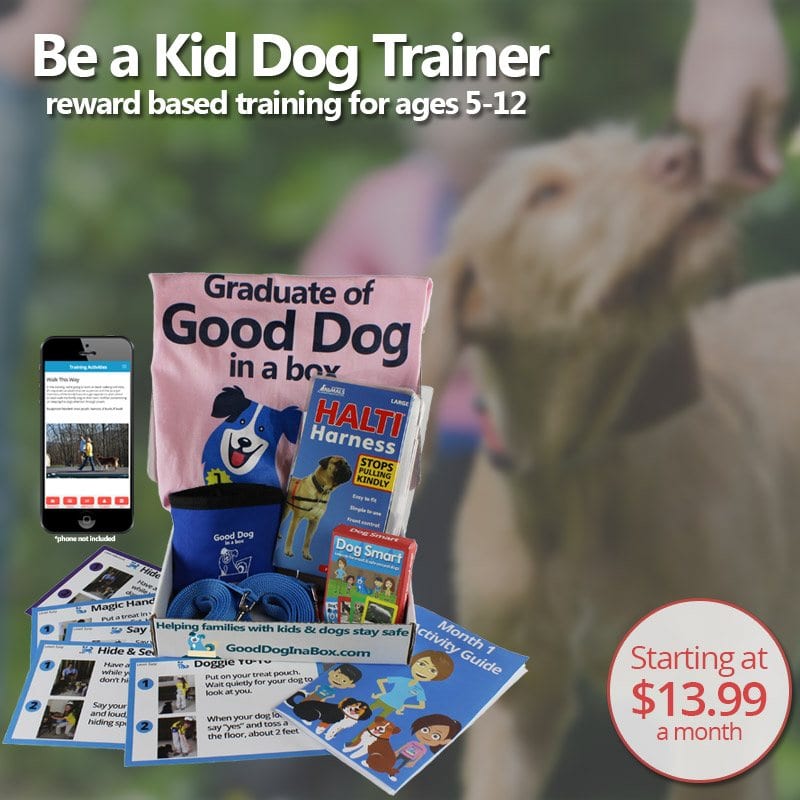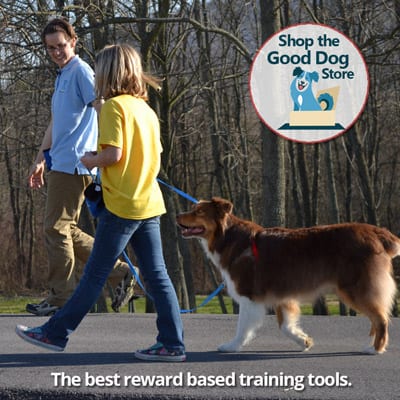Over 400,000 children in the United States are bitten by dogs each year according to the American Veterinary Medical Association. The majority of dog bites involving young children happen in familiar environments with dogs they know. Many people report that these bites seem to come “out of the blue”, that the dog just snapped without any warning. The reality is that there are many factors that lead up to dog bites. And that many of these bites could have been prevented through awareness, supervision, and education of parents and children with SAFE.
Most dogs do give warning signs of their stress and discomfort, and most people are simply unaware of these signals or ignore them. Learning to read a dog’s body language and becoming more aware of their stress levels when they are interacting with children can help diffuse situations before bites occur.
Perhaps there’s no greater prevention for dog bites than active, adult supervision. In many cases, adults were not providing adequate supervision when bites occurred. If there is not an adult actively supervising children and dogs, barriers, such as baby gates, can be helpful management tools in our busy multi-tasking world.
With parental supervision, kids can learn smart ways of interacting with dogs using the skills taught in SAFE, such as gently petting instead of hugging and kissing, respecting the dog’s space during mealtimes and when sleeping, and not treating the dog like an object or toy. SAFE helps children develop skills that not only promotes dog bite prevention, but builds a relationship between your children and dogs based on trust and cooperation.

